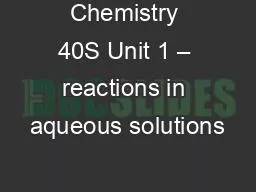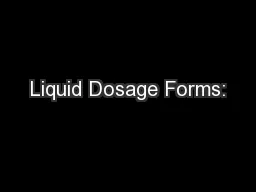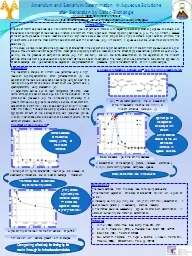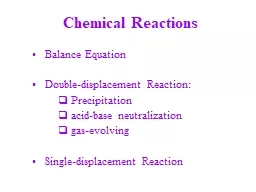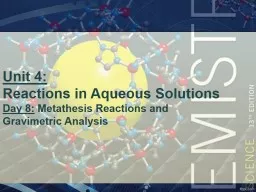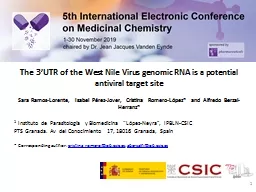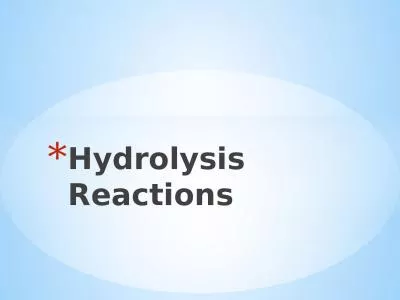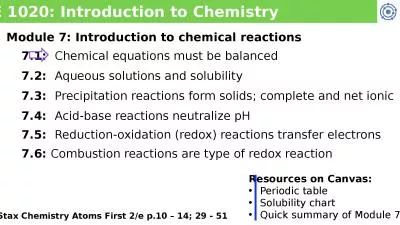PPT-Chemistry 40S Unit 1 – reactions in aqueous solutions
Author : reportperfect | Published Date : 2020-07-01
Lesson 2 Learning outcomes C12102 Perform a laboratory activity to develop a set of solubility rules C12103 Use a table of solubility rules to predict the formation
Presentation Embed Code
Download Presentation
Download Presentation The PPT/PDF document "Chemistry 40S Unit 1 – reactions in aq..." is the property of its rightful owner. Permission is granted to download and print the materials on this website for personal, non-commercial use only, and to display it on your personal computer provided you do not modify the materials and that you retain all copyright notices contained in the materials. By downloading content from our website, you accept the terms of this agreement.
Chemistry 40S Unit 1 – reactions in aqueous solutions: Transcript
Download Rules Of Document
"Chemistry 40S Unit 1 – reactions in aqueous solutions"The content belongs to its owner. You may download and print it for personal use, without modification, and keep all copyright notices. By downloading, you agree to these terms.
Related Documents

